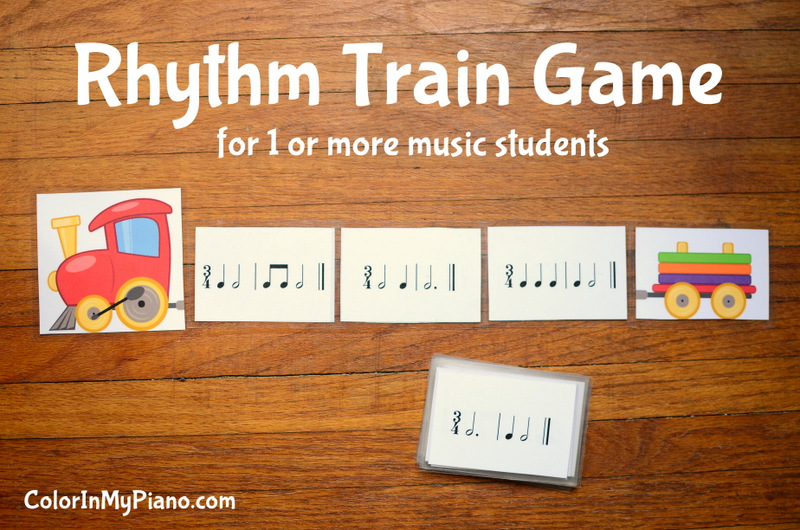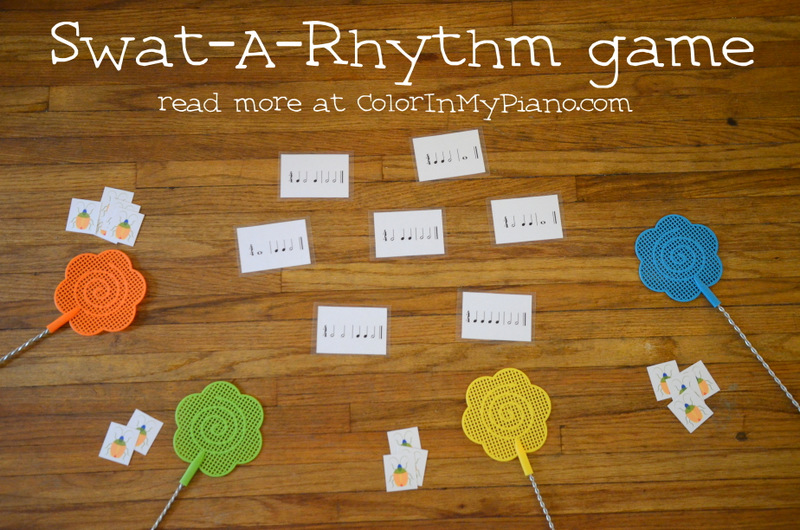Yesterday, my student Robbie and I made a quick video for you, demonstrating how to play my new Trick-or-Treat! Rhythm Game.
Here’s what you’ll find in the video:
- 0:12 | What to do if a student happens to draw a TREAT card first thing! (This is a rare occurance.)
- 0:33 | How to teach a student how to perform the rhythm patterns on the TRICK cards accurately. They need to be able to (1) identify the meter, (2) count in before speaking/counting the rhythm pattern, and (3) maintain the meter as they speak/tap the rhythm pattern. (More tips on this below.)
- 1:00, 1:20, and 1:42 | Watch Robbie chant more rhythm cards.
- 2:00 | Robbie draws a TREAT card, ending the game.
>>> Watch the video >>>
Below is more elaboration and tips on how to guide your students to perform rhythm patterns accurately. I hope you’ll enjoy hearing my thoughts on this, whether or not you plan to use my Trick-or-Treat! Rhythm Game!
1. Identify the meter as either duple meter or triple meter.
Ask students: “Is this is duple meter or triple meter?” Sometimes I follow up with: “How do you know?”
With these rhythm cards, it’s easy: just look at the way the eighth note beams are grouped!

To make sure it’s not only a visual thing, though, I teach my students to listen to and feel the meter as well.
Continue reading “VIDEO: Playing the Trick-or-Treat! Rhythm Game with a Piano Student”

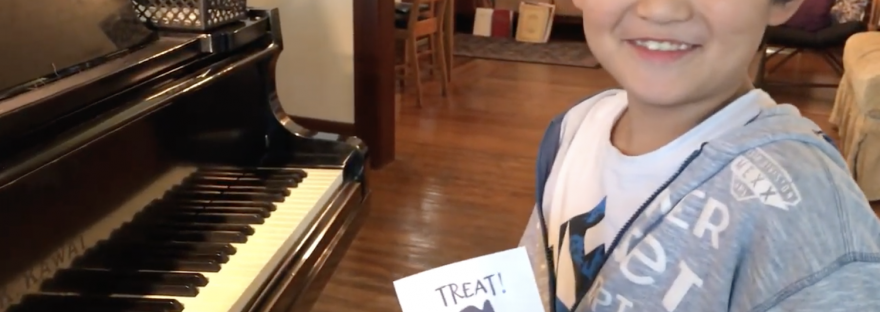

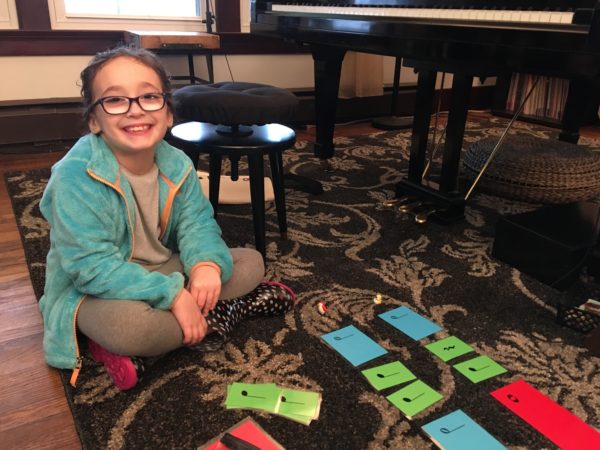
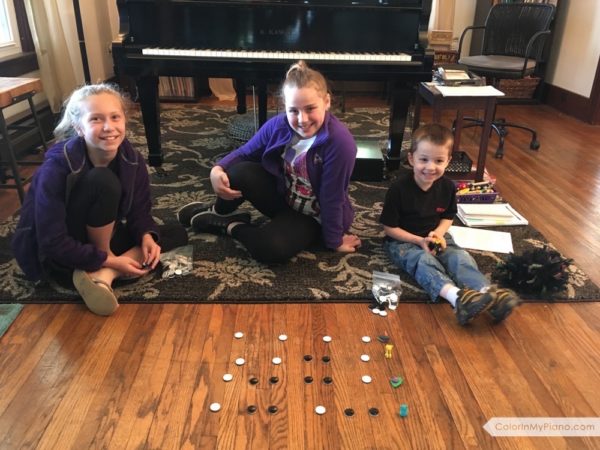

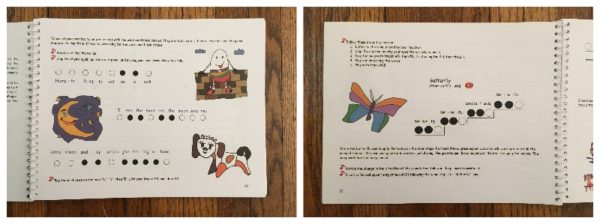
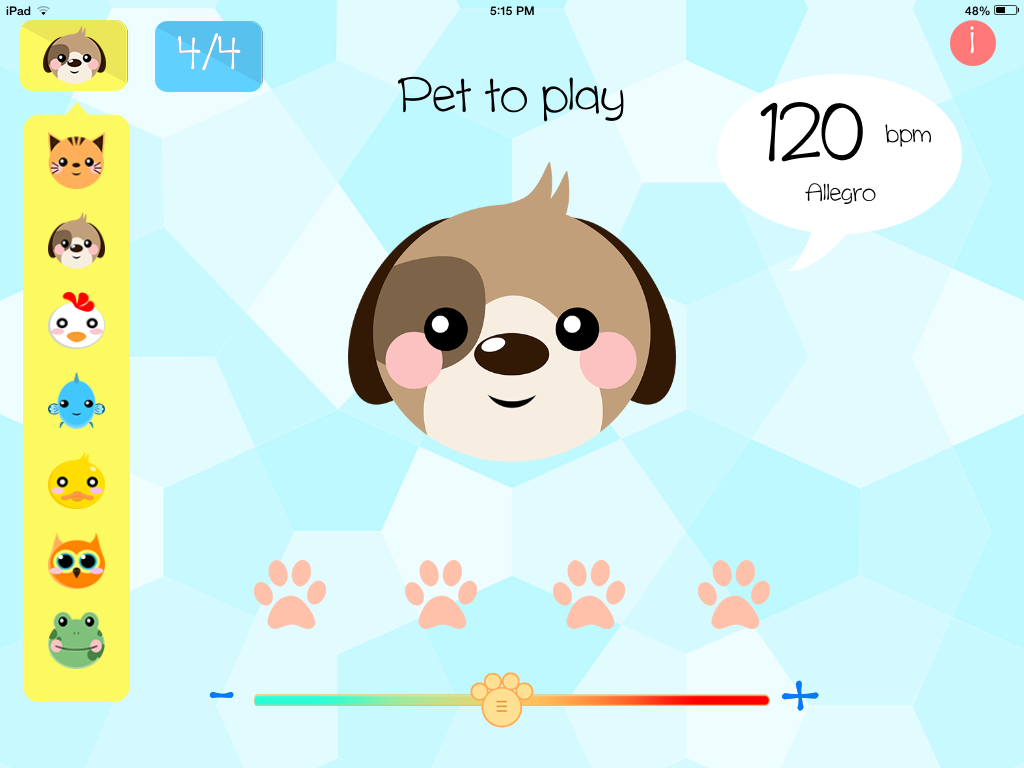
 App Review:
App Review: 

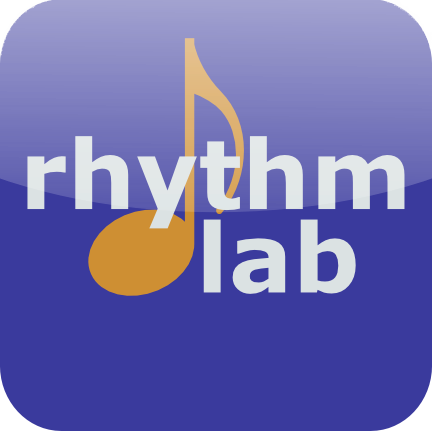
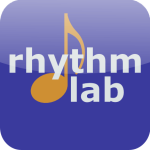 Rhythm Lab
Rhythm Lab




